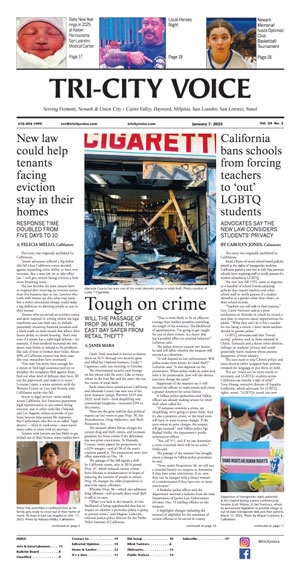[et_pb_section bb_built=”1″ _builder_version=”3.22″][et_pb_row _builder_version=”3.25″ background_size=”initial” background_position=”top_left” background_repeat=”repeat”][et_pb_column type=”4_4″ _builder_version=”3.0.47″ custom_padding=”|||” custom_padding__hover=”|||”][et_pb_image src=”http://tricityvoice.com/wp-content/uploads/2018/10/TCV-Search.png” align=”center” force_fullwidth=”on” align_tablet=”center” align_last_edited=”on|desktop” _builder_version=”4.9.6″ animation_style=”fade” box_shadow_style=”preset3″ vertical_offset_tablet=”0″ horizontal_offset_tablet=”0″ z_index_tablet=”0″]
[/et_pb_image][et_pb_divider divider_weight=”4″ _builder_version=”3.14″ height=”0px”]
[/et_pb_divider][et_pb_text _builder_version=”4.21.0″ z_index_tablet=”500″ hover_enabled=”0″ text_text_shadow_horizontal_length_tablet=”0px” text_text_shadow_vertical_length_tablet=”0px” text_text_shadow_blur_strength_tablet=”1px” link_text_shadow_horizontal_length_tablet=”0px” link_text_shadow_vertical_length_tablet=”0px” link_text_shadow_blur_strength_tablet=”1px” ul_text_shadow_horizontal_length_tablet=”0px” ul_text_shadow_vertical_length_tablet=”0px” ul_text_shadow_blur_strength_tablet=”1px” ol_text_shadow_horizontal_length_tablet=”0px” ol_text_shadow_vertical_length_tablet=”0px” ol_text_shadow_blur_strength_tablet=”1px” quote_text_shadow_horizontal_length_tablet=”0px” quote_text_shadow_vertical_length_tablet=”0px” quote_text_shadow_blur_strength_tablet=”1px” header_text_shadow_horizontal_length_tablet=”0px” header_text_shadow_vertical_length_tablet=”0px” header_text_shadow_blur_strength_tablet=”1px” header_2_text_shadow_horizontal_length_tablet=”0px” header_2_text_shadow_vertical_length_tablet=”0px” header_2_text_shadow_blur_strength_tablet=”1px” header_3_text_shadow_horizontal_length_tablet=”0px” header_3_text_shadow_vertical_length_tablet=”0px” header_3_text_shadow_blur_strength_tablet=”1px” header_4_text_shadow_horizontal_length_tablet=”0px” header_4_text_shadow_vertical_length_tablet=”0px” header_4_text_shadow_blur_strength_tablet=”1px” header_5_text_shadow_horizontal_length_tablet=”0px” header_5_text_shadow_vertical_length_tablet=”0px” header_5_text_shadow_blur_strength_tablet=”1px” header_6_text_shadow_horizontal_length_tablet=”0px” header_6_text_shadow_vertical_length_tablet=”0px” header_6_text_shadow_blur_strength_tablet=”1px” box_shadow_horizontal_tablet=”0px” box_shadow_vertical_tablet=”0px” box_shadow_blur_tablet=”40px” box_shadow_spread_tablet=”0px” text_text_shadow_horizontal_length=”text_text_shadow_style,%91object Object%93″ text_text_shadow_vertical_length=”text_text_shadow_style,%91object Object%93″ text_text_shadow_blur_strength=”text_text_shadow_style,%91object Object%93″ link_text_shadow_horizontal_length=”link_text_shadow_style,%91object Object%93″ link_text_shadow_vertical_length=”link_text_shadow_style,%91object Object%93″ link_text_shadow_blur_strength=”link_text_shadow_style,%91object Object%93″ ul_text_shadow_horizontal_length=”ul_text_shadow_style,%91object Object%93″ ul_text_shadow_vertical_length=”ul_text_shadow_style,%91object Object%93″ ul_text_shadow_blur_strength=”ul_text_shadow_style,%91object Object%93″ ol_text_shadow_horizontal_length=”ol_text_shadow_style,%91object Object%93″ ol_text_shadow_vertical_length=”ol_text_shadow_style,%91object Object%93″ ol_text_shadow_blur_strength=”ol_text_shadow_style,%91object Object%93″ quote_text_shadow_horizontal_length=”quote_text_shadow_style,%91object Object%93″ quote_text_shadow_vertical_length=”quote_text_shadow_style,%91object Object%93″ quote_text_shadow_blur_strength=”quote_text_shadow_style,%91object Object%93″ header_text_shadow_horizontal_length=”header_text_shadow_style,%91object Object%93″ header_text_shadow_vertical_length=”header_text_shadow_style,%91object Object%93″ header_text_shadow_blur_strength=”header_text_shadow_style,%91object Object%93″ header_2_text_shadow_horizontal_length=”header_2_text_shadow_style,%91object Object%93″ header_2_text_shadow_vertical_length=”header_2_text_shadow_style,%91object Object%93″ header_2_text_shadow_blur_strength=”header_2_text_shadow_style,%91object Object%93″ header_3_text_shadow_horizontal_length=”header_3_text_shadow_style,%91object Object%93″ header_3_text_shadow_vertical_length=”header_3_text_shadow_style,%91object Object%93″ header_3_text_shadow_blur_strength=”header_3_text_shadow_style,%91object Object%93″ header_4_text_shadow_horizontal_length=”header_4_text_shadow_style,%91object Object%93″ header_4_text_shadow_vertical_length=”header_4_text_shadow_style,%91object Object%93″ header_4_text_shadow_blur_strength=”header_4_text_shadow_style,%91object Object%93″ header_5_text_shadow_horizontal_length=”header_5_text_shadow_style,%91object Object%93″ header_5_text_shadow_vertical_length=”header_5_text_shadow_style,%91object Object%93″ header_5_text_shadow_blur_strength=”header_5_text_shadow_style,%91object Object%93″ header_6_text_shadow_horizontal_length=”header_6_text_shadow_style,%91object Object%93″ header_6_text_shadow_vertical_length=”header_6_text_shadow_style,%91object Object%93″ header_6_text_shadow_blur_strength=”header_6_text_shadow_style,%91object Object%93″ vertical_offset_tablet=”0″ horizontal_offset_tablet=”0″ background_pattern_color=”rgba(0,0,0,0.2)” background_mask_color=”#ffffff”]
A 1933 science fiction novel co-written by Philip Wylie and Edwin Balmer and subsequent movie in 1951 described a scenario in which Earth was doomed by an approaching extraterrestrial object. Humanity at first is unbelieving, but eventually begins to understand that life as they know it on Earth will be eradicated. A spaceship ark is constructed to bring survivors and sample life forms from earth to another suitable planet. It turns out that several ships make the journey. However, many of those selected bring their own foibles and prejudices with them. A struggle for domination and survival ensues. The lesson appears to be that humanity, for all its strengths, includes substantial intrinsic weaknesses as well.
Building on this old theme, but still true, is that the best intentions of those who profess to direct the course of our society are often excessively influenced by a crisis of the times; recognition of long-term consequences is set aside. A venerable cartoon from sales manuals outlines the problem. In it, a medieval warrior laying siege to a well-fortified castle is busy supervising a catapult while a salesman is trying to gain his attention with a modern assault device. The attacker is too busy with the immediate battle to pay attention to a more effective solution to his problem. Another oft used cartoon and phrase is “up to my eyeballs (or use your own anatomical term) in alligators” indicating intense pressure to take action. When confronted with immediate danger, it is hard to remember you’re there to drain the swamp.
Our current housing crisis is a good example of the preceding dilemmas. Good fortune, entrepreneurial success and geography have created a high-pressure environment for residents and lawmakers. There is no doubt that more affordable housing is needed. Definition of the term “affordable” has now been stretched to even include homes with a price point of over $1 million. Survivors of the initial wave of migration to the Bay Area have been caught between a future vision of housing – smaller, dense, compact, using alternative energy and transportation – and the reality of the present. As we move toward this new world, our preferences and prejudices travel with us and may retard progress but can also warn us of ignoring concurrent dangers. If we are draining the current housing crisis swamp, should we disregard the present danger to those trying to survive the journey?
State regulations that have erased significant city controls of development. Adding to this uncertainty, is the question of how new development will integrate with existing business and residences. In the aftermath of civic caution and indecision, is the risk of construction without local citizen control or input. Hopefully, a rational and informed decision can be made sooner rather than later in both cases to eliminate the risk of later, unwelcome developments based solely on packing as many human beings as possible into each available acre of land.
While current residents struggle with the conundrum of traffic, overcrowding and quality of life, the current and ongoing housing crisis cannot be ignored. When questions of civic viability are raised, input of boards and commissions tasked with discussion of economic, transportation and planning issues should be heard by our city council. Problems that integrate with all facets of the community deserve the attention of each of these groups. Staff is a valuable resource but so is the wisdom and judgement of our fellow citizens serving on boards and commissions. When worlds collide and we find ourselves up to our eyeballs in alligators, help is all around us; we just need to use our assets efficiently and wisely.
[/et_pb_text][/et_pb_column][/et_pb_row][/et_pb_section]



